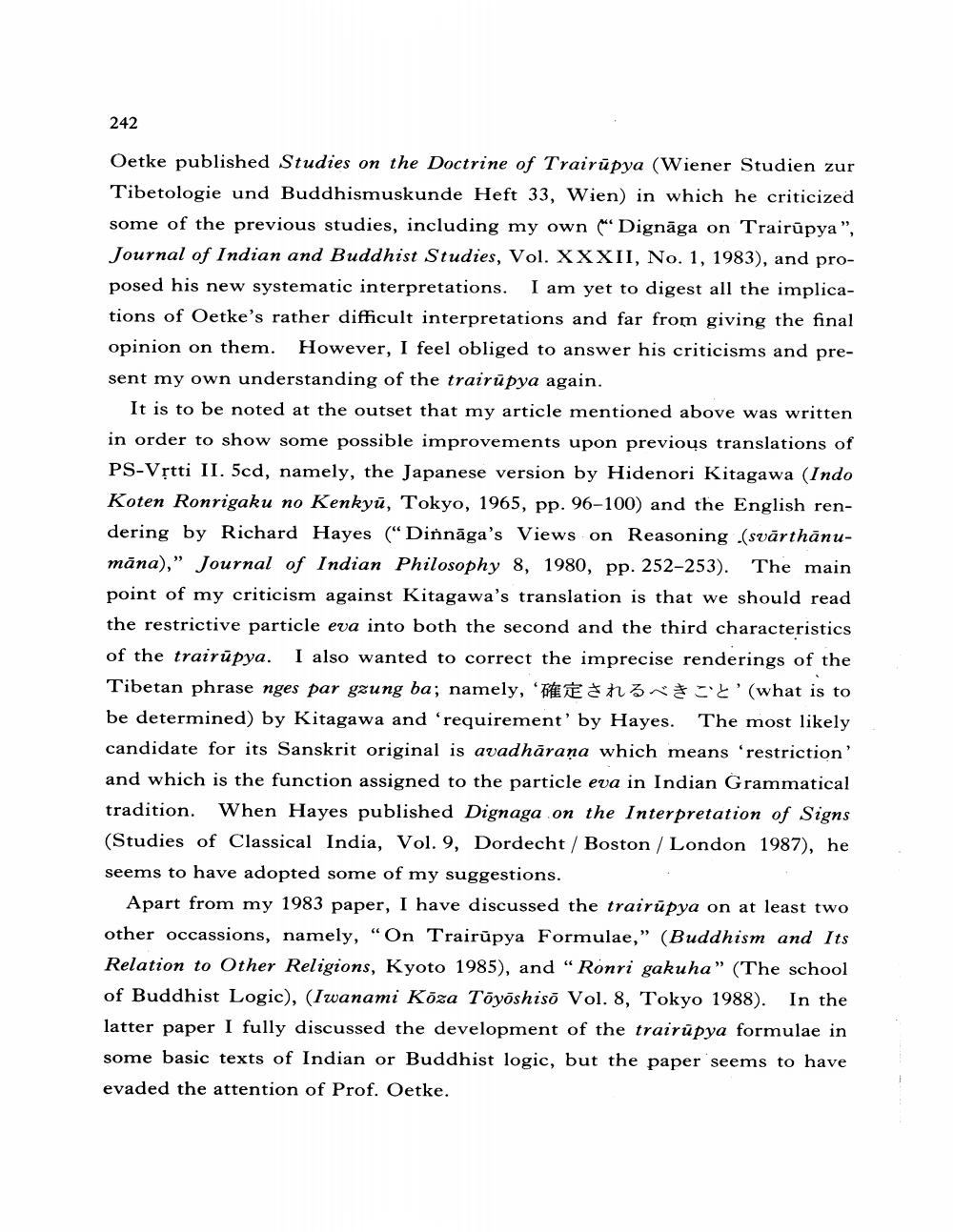Book Title: Dignaga On Trairupya Reconsidered Author(s): Shoryu Katsura Publisher: Shoryu Katsura View full book textPage 2
________________ 242 Oetke published Studies on the Doctrine of Trairupya (Wiener Studien zur Tibetologie und Buddhismuskunde Heft 33, Wien) in which he criticized some of the previous studies, including my own Dignaga on Trairûpya". Journal of Indian and Buddhist Studies, Vol. XXXII, No. 1, 1983), and proposed his new systematic interpretations. I am yet to digest all the implications of Oetke's rather difficult interpretations and far from giving the final opinion on them. However, I feel obliged to answer his criticisms and present my own understanding of the trairupya again. It is to be noted at the outset that my article mentioned above was written in order to show some possible improvements upon previous translations of PS-Vrtti II. Sed, namely, the Japanese version by Hidenori Kitagawa (Indo Koten Ronrigaku no Kenkyu, Tokyo, 1965, pp. 96-100) and the English rendering by Richard Hayes ("Dinnaga's Views on Reasoning (svarthänumāna)," Journal of Indian Philosophy 8, 1980, pp. 252-253). The main point of my criticism against Kitagawa's translation is that we should read the restrictive particle eva into both the second and the third characteristics of the trairupya. I also wanted to correct the imprecise renderings of the Tibetan phrase nges par gzung ba; namely, ''(what is to be determined) by Kitagawa and 'requirement' by Hayes. The most likely candidate for its Sanskrit original is avadharaṇa which means 'restriction' and which is the function assigned to the particle eva in Indian Grammatical tradition. When Hayes published Dignaga on the Interpretation of Signs (Studies of Classical India, Vol. 9, Dordecht/ Boston / London 1987), he seems to have adopted some of my suggestions. Apart from my 1983 paper, I have discussed the trairupya on at least two other occassions, namely, "On Trairüpya Formulae," (Buddhism and Its Relation to Other Religions, Kyoto 1985), and "Ronri gakuha" (The school of Buddhist Logic), (Iwanami Kōza Tōyōshisō Vol. 8, Tokyo 1988). In the latter paper I fully discussed the development of the trairůpya formulae in some basic texts of Indian or Buddhist logic, but the paper seems to have evaded the attention of Prof. Oetke.Page Navigation
1 2 3 4 5 6 7 8 9 10 11 12 13 14 15 16 17 18 19 20 21 22 ... 26
